A few weekends ago, I paid a visit to my dear friend, Bhavani Prakash, who lives in the West Coast, and I was looking forward to seeing her inspiring rooftop and balcony gardens again. Bhavani hosted Ginny Giovanni (pictured above) and I for tea that rainy afternoon, and gave us an unforgettable experience of not just lovely treats, but also a tour of her garden spaces, and the condominium’s community garden, which she helped initiate.
I met Bhavani years ago through work in the sustainability field, where she is very active in creating and inspiring change. She is a strong advocate for green living, connecting to nature, and mindfulness, she raises awareness of these meaningful topics at corporate and individual levels through speaking at conferences, and by providing coaching and training. Bhavani is well known for her environmental advocacy website, Eco WALK the Talk, and sustainability and thought leadership platform Green Collar Asia. More recently, she has been conducting Mindfulness at Work training with The Potential Project. As busy as she is, she manages to be a hands-on, nurturing mother and gardener, and does well at both.
She has been able to grow a variety of fruit, herbs, vegetables and ornamentals on her balconies, including sugarcane, bananas, sweet potatoes, peanuts, winged beans, purple beans, mustard greens, watermelon, custard apple, mulberry, moringa trees, frangipanni, among others. Bhavani also makes her own compost which she uses for her plants.
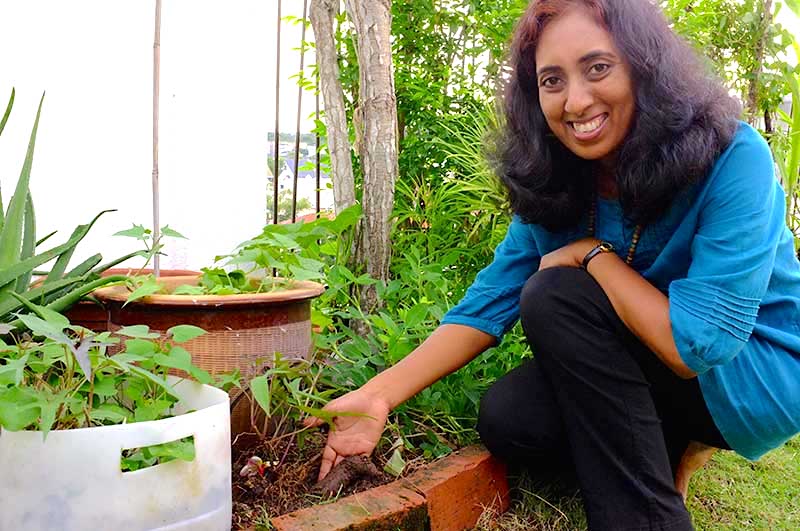
1. You have a close affinity with plants and nature, which you are a strong advocate for, when did this all begin?
I’ve always loved nature since childhood, but it was when I first came to Singapore in 2003, that my proximity to nature took a more concrete form. I started guiding at the Siingapore Botanic Gardens in the rainforests section. My affinity for environmental causes grew from there, and I completely switched from a career in finance to environment and sustainability in 2008 after a wake-up call. I became interested in organic farming and urban food gardening as an important way to take action towards food security.
The journey took me to several community gardens in Singapore, as well as to several organic farms in Malaysia, Singapore and India. This helped me understand what the movement was all about, as well as understand the basics of farming, its challenges and successes. In India, I stayed at Dr Vandana Shiva’s farm in Uttarakhand called Navdanya. She’s a leading anti-GMO advocate, and that was one of the experiences that lead me to talk about the need to preserve food plant biodiversity in my first TED talk.
In 2009, I was fortunate enough to move into an apartment sent directly from heaven- with a full-fledged roof top planter with embedded soil, and 2 ½ balconies receiving various degrees of sun and rain. It was a sign from the universe saying, ‘It’s time to walk the talk and start growing food yourself!’
2. What is it that you love most about your balcony gardens?
It’s the sense of immense peace and freshness that an early morning mindfulness practice brings in the garden. Research shows the positive benefits on the brain and the nervous system of seeing images of nature, as opposed to urban images of buildings or even our digital devices, whether it’s first thing in the morning or during the day.
Everything is constantly changing in the garden from moment to moment. One can notice this impermanence of things on a daily basis – the garden is never the same as yesterday and will be different tomorrow. Just paying attention to what’s new and different is great for keeping one’s mind curious and present to what’s emerging. This curiosity also helps to marvel at the infinite forms, shapes, sizes, colours, textures, fragrances and tastes that are found in a small garden, let alone in all of nature!
We have this beautiful yellow hibiscus plant, and the flower opens up in all its glory. No matter how preoccupied your mind is, you can’t but help stop and admire the completeness with it shares its beauty. Yet the flower only lasts for a day. Just because its life is temporary, doesn’t stop it from showing up in full splendour, giving joy and happiness to the world, without expectation. The garden teaches me many profound lessons of life of the way we can show up in life.
The most incredible thing about the garden is the way matter can be recycled endlessly. We compost our fruit and veggie peel waste, as well as some of our brown leaves from the garden, and all this transform almost miraculously in a few months into rich compost that goes back into the garden to stimulate microorganisms in the soil. For me this is such a marvellous way to understand the circle of life, and to be able to close the loop instead of throwing garbage into a plastic bag and sending it down the chute to an incinerator. Link: http://www.ecowalkthetalk.com/blog/2010/07/21/part-1-how-to-compost-at-home-using-container-pots/
3. What are your thoughts on managing pests in the garden?
The garden is a mini-ecoystem, and it is possible to see the web of life emerging even in a small space. One thing that helps is to make sure it’s an attractive space for all kinds of species, which helps with balancing pests. When the mulberries and curry leaf plants flower, the bulbuls frequent the gardens to eat the fruits, and sweep up insects like lizards who feed on the flies in the garden. We had an invasion of grasshoppers recently, and we noted for some reason the bulbuls had not been coming as often. Now they’re back, and the garden ecosystem is in balance.
We do get aphids and scales on some plants from time to time. I don’t use any kind of toxic pesticides. I usually try to nip the problem in the bud before these pests spread, by removing them manually, or by cutting off the affected leaves or branches. The presence of too many ants in a plant is a sign of infestation, as they usually help to spread aphids. So I deter ants by putting turmeric powder between the nodes of leaves or near the flowers, and that stops the aphids from spreading. The other things I try from time to time are spraying crushed garlic and water, and also diluted neem oil.
4. Your husband, Prakash also enjoys gardening, what are some of the plants he has grown? Do your daughters enjoy gardening also?
I’m fortunate that Prakash really loves gardening. He takes the initiative to do a lot of things in the garden like growing plants that I would not have prioritised, like watermelon, chillies, sugarcane and peanuts which have all emerged out of his interests. He also used a bamboo railing imaginatively to create a natural ceiling in a section of the rooftop, and now the plants that grow there like the blue pea, jasmine and allamanda create a natural shelter for the plants below like tomatoes which can’t take so much sun on the rooftop. The frame also enables the vines of the purple beans and broad beans to climb up and grow.
The girls enjoy the garden in their own way. Lavanya my younger one, loves to take photographs and she runs her own nature blog. So she shares many things that she observes in the garden, like the sunbirds nesting (http://mynatureexperiences.wordpress.com/2014/05/04/olive-backed-sunbirds-nesting-in-my-garden-updatevideo/ )
Ananya, my older one, generally takes a break from her work or studies by coming into the garden to relax. She also likes to draw some of the things she sees in the garden.
Even if the girls are not active gardeners right now, I’m sure they’ll grow up to become ones in future as the garden is such an intrinsic part of their lives. When I watch them on the rooftop, and see them gaze into the sky, or sit still in wonder at the tiny sunbird that comes so close to them to sip nectar from a flower nearby, I know they still have a sense of wonder and awe in them that is lost in many children of this digital age. They also observe how long it takes and how much effort goes into say, growing a banana plant from sapling till it fruits. So they don’t take for granted what is readily available on supermarket shelves.
5. With your busy schedule, how do you find the time to grow all these lovely plants? Are you selective with the plants you grow?
We tend to split roles in the family. Regular watering for the balconies downstairs is done in the morning by my helper and the girls. Upstairs on the rooftop, Prakash usually does the watering in the evenings. I usually step in during the weekends to do a more time intensive job of removing weeds and dead leaves, removing any pests, and checking in on the general condition of the plants. So it’s all a group effort.
I usually grow plants that I can use at home in some way for cooking and that may not readily be available in our local supermarkets. Of late, I’ve also been adding flowering plants just to add more colour in the garden and attract more birds and butterflies.
6. What are your favourite edible plants from your balcony gardens, and what do you cook with them?
My favourite edible greens are sweet potato leaves, as they thrive so well in clayey soil, exposed to full sun and rain, and require very little attention. I grow three different types of sweet potatoes mainly for the leaves, and they are an excellent source of nutrition. Amaranth greens are also grow really easily in pots, and in our balconies, literally walk from pot to pot as they spread their seeds easily.
Our concept of greens is normally that they are grown close to the ground or in pots, but there are several greens that actually grow on trees or bushes. My favourite is the drumstick tree (Moringa Oleifera) whose leaves are very nutritious and packed with calcium, vitamins and minerals. Mani chai or cekur manis or star gooseberry (Saroporus Androgynous) is a great fence plant and the leaves are full of proteins, minerals, Vitamin B and C, though there must be consumed in moderation. The other tree we grow is what we call agathi keerai in Tamil or august tree leaves (Sesbania Grandiflora), rich in calcium, vitamins and iron. The advantage of using greens from trees is ease of maintenance, and of having a perennial supply. So I never run out of greens, as I the rooftop and balcony gardens provide different varieties for our kitchen. When we think of food security, there are so many landscaping plants in a city of pure ornamental value, that can easily be replaced by trees with edible leaves.
I also love the herbs we grow such as thai and sweet basil, oregano, thyme, sage, rosemary, dill which we often toss into pasta, or make a mixed herb rice which is delicious. I grow a lot of tropical herbs that are often used in Indian cuisine like curry leaves, coriander, fenugreek and mustard.
7. You also helped set up a community garden in your condominium, which is a wonderful initiative, and I’ve seen how well it’s coming along. How did you all succeed in convincing the management to let you use the space for its residents?
I have to give most of the credit for this to Gan Cheong Weei, my neighbour, who’s also is a butterfly enthusiast with Nature Society (Singapore). It was quite easy to convince the management because the chairman of the management council was so supportive with the idea throughout. At the time, we planted about 20 local fruiting trees so they’d be low maintenance. Now more and more residents are using the space near the fence to grow climbers and vines, as well as some ground level plants. It’s really nice to see people making use of the space well for growing food plants.
8. What advice do you have for first time gardeners who lead busy lives?
Ironically, gardening is a great way to slow down and to give a much needed pause in our busy lives. Even a few moments of gardening can become a way to relax, and get in deeper touch with our five senses, which we tend to use on autopilot for most of the time.
Start small with easy to grow herbs like mint and basil. Mustard seeds grow really easily, and one can use them in various stages, from young shoots and leaves for salads, and slightly older leaves as greens with lentils.
One of the common complaints of new gardeners is that their plants don’t survive, and they conclude they don’t have a green thumb. If I as a quintessential city girl with a former finance background can grow plants, anyone can! It’s not about having green thumbs but more about having green eyes. It really comes to observing the needs of the plant – how much water and sun does it need? Is the pot too wet or too dry? I used to let plants wilt quite regularly in my early days with too much love by excessively watering. Or I’d expect all plants including Mediterranean herbs to grow on the rooftop under full blown sun and rain. Of course they didn’t survive long because those are not the original conditions under which they grow. So understanding whether a plant is tropical or temperate, and the kind of soil (clayey, or loose), the amount of sunlight (full blown, partial or minimal), and the amount of water needed, would really help in enabling plants to thrive.
So don’t give up, and ultimately you’ll reach a state of ‘wu – wei’ which in Zen tradition means ‘non-doing.’ When you find the conditions that enable the plant to grow by itself without too much monitoring, then you’ve really understood the personality of the plant. You can then work with its true nature rather than impose your expectations on it.
Thank you, Bhavani!
Here are some yummy treats that her family and helper prepared for us. Except for the corn chips, all food was made by them.
During our walk around the condominium premises, Bhavani visited this fig tree and picked up a couple of dried leaves from the ground. It became part of our afternoon tea afterwards, when it was turned into a delicious tea.
Bhavani has many keen gardeners as neighbours, in fact the whole compound features lots of greenery, which really amazed me. I had a relaxing time walking around and enjoyed my time there.
I hope this garden story inspires you to do more gardening, like it did for me. It also made me think more about how neighbours can harmoniously come together to create community and food resilience in Singapore. Soon, I will be featuring a relatively young but thriving community garden in the west, look out for it!
Big thanks to Bhavani Prakash for sharing some photos with me

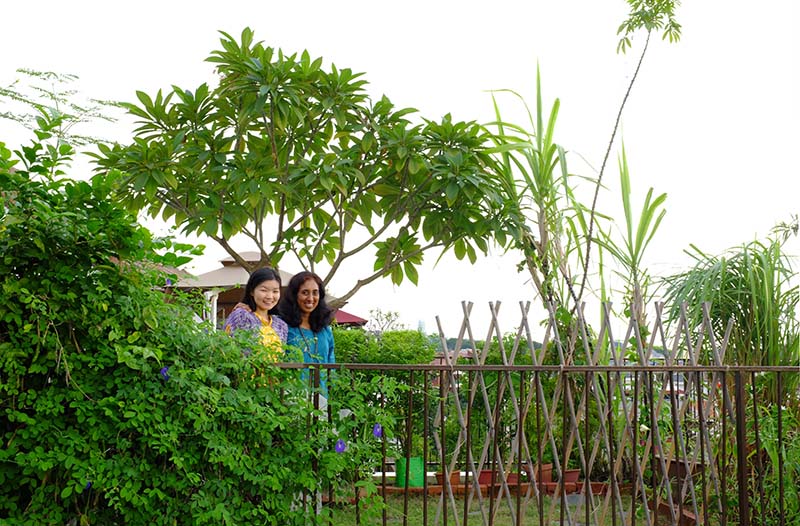
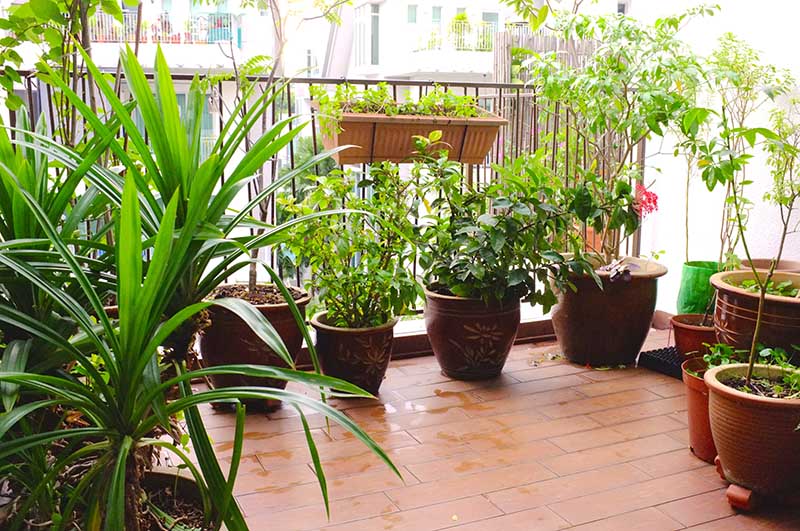
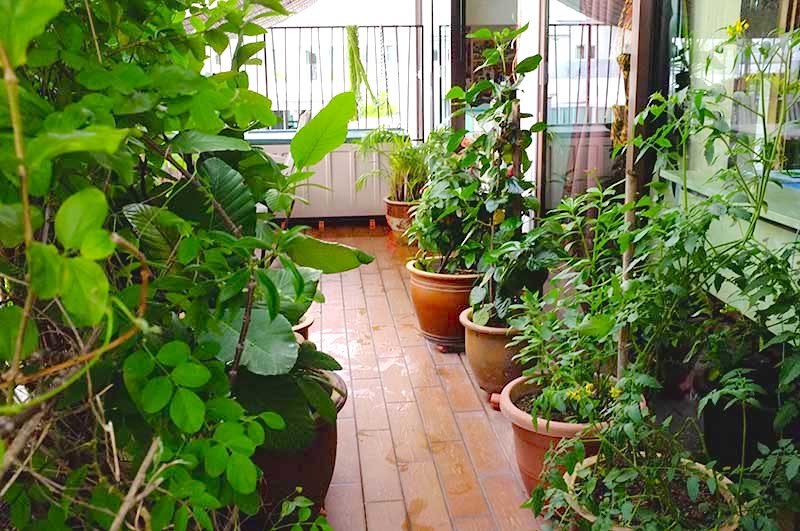
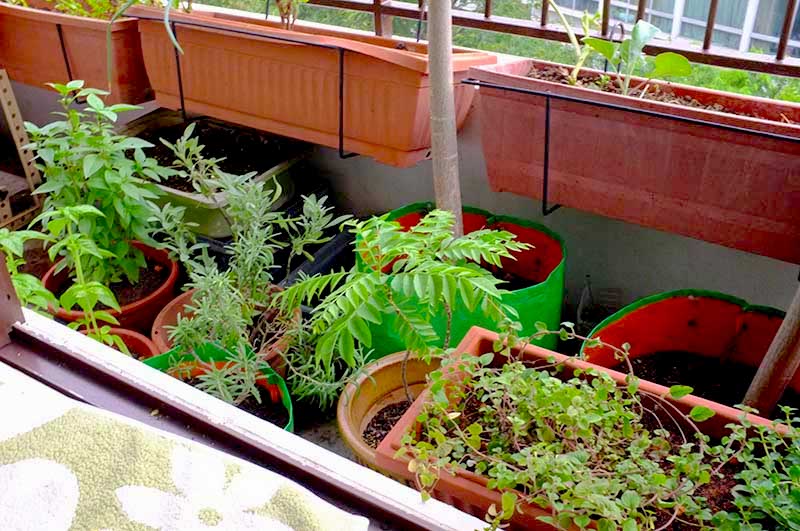
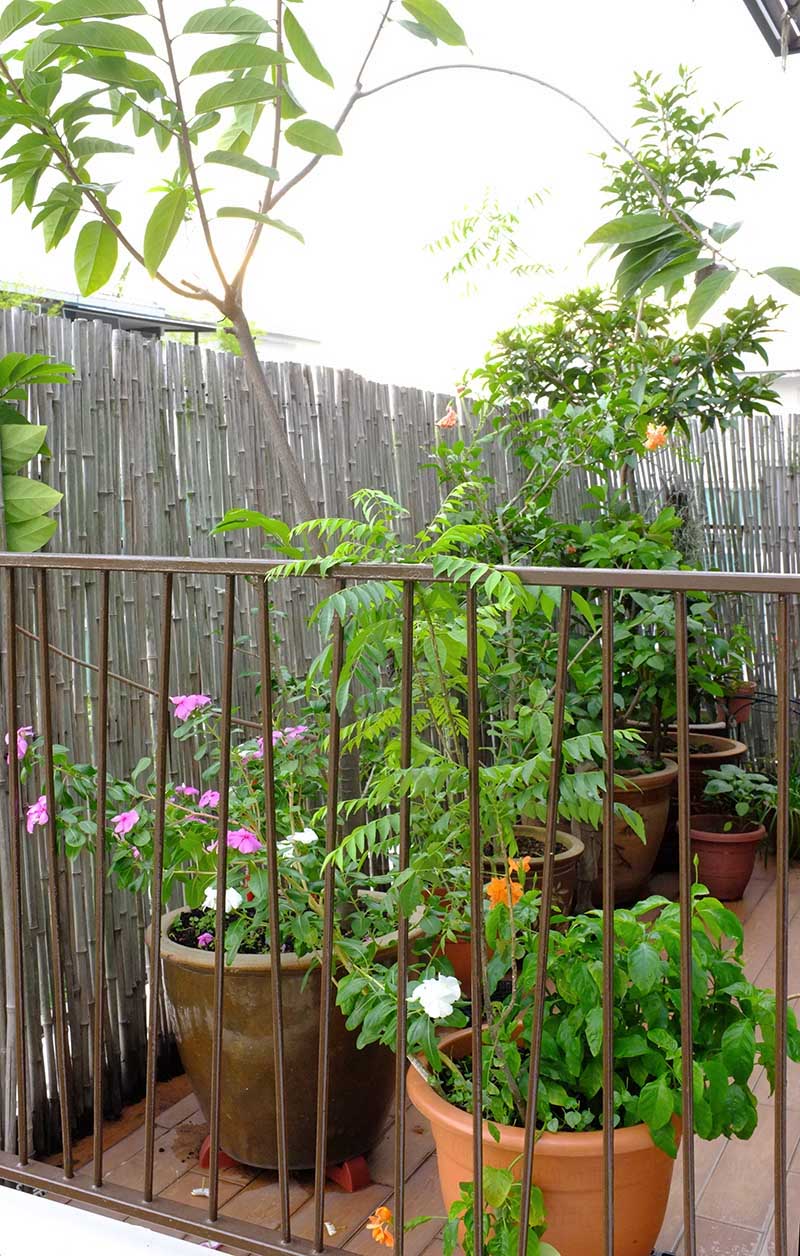
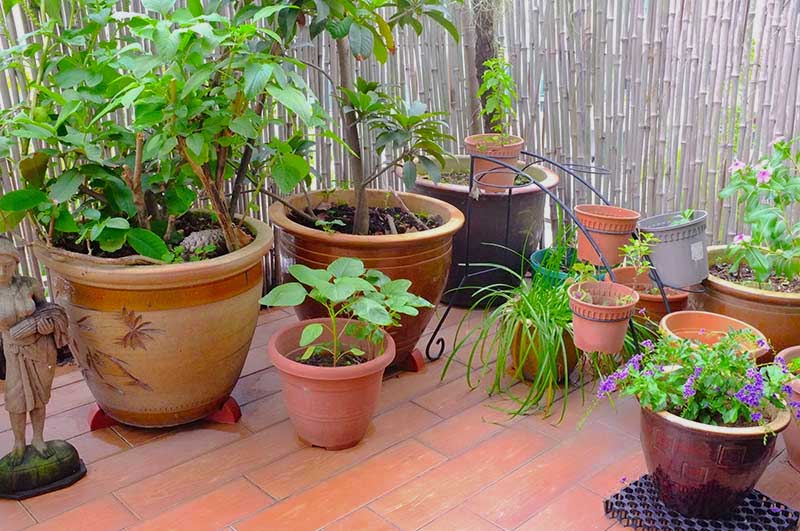
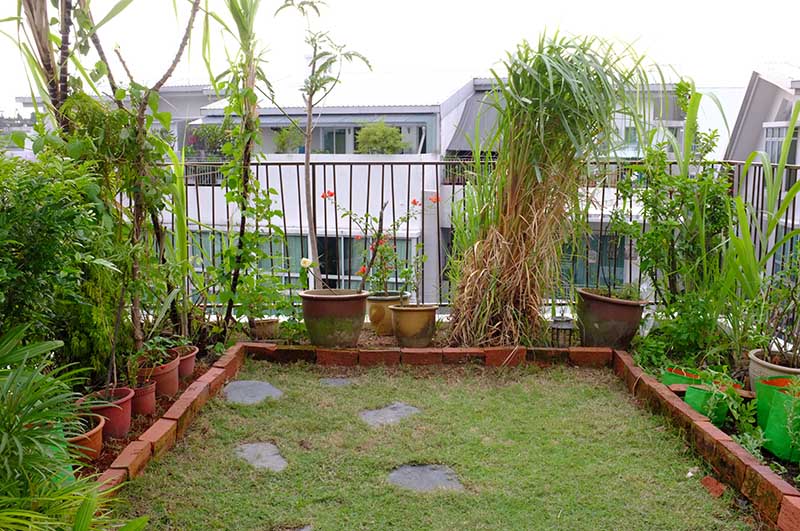
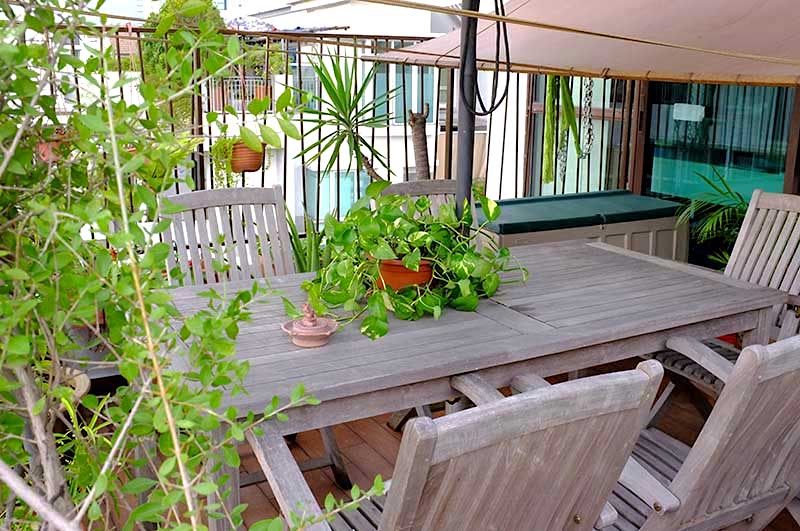
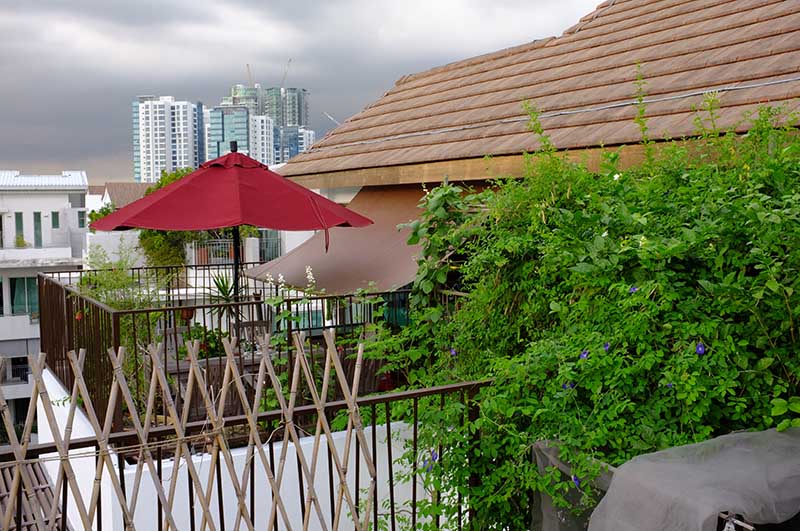
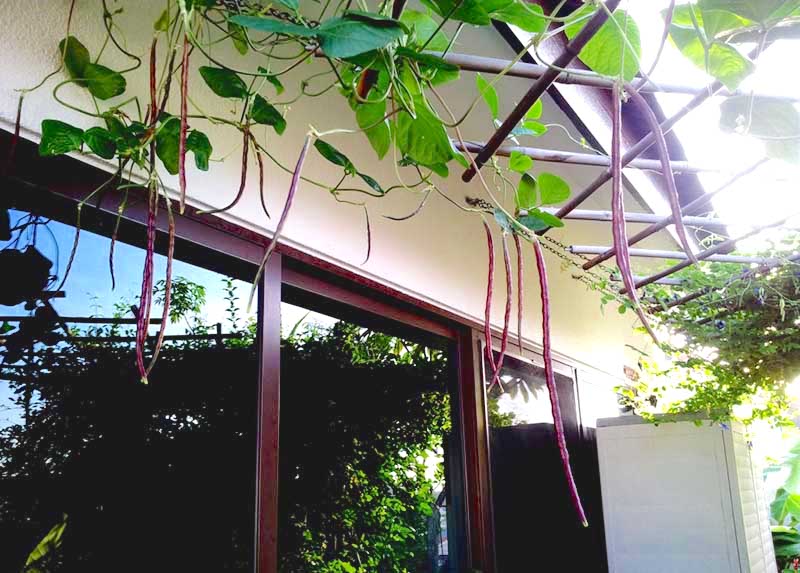
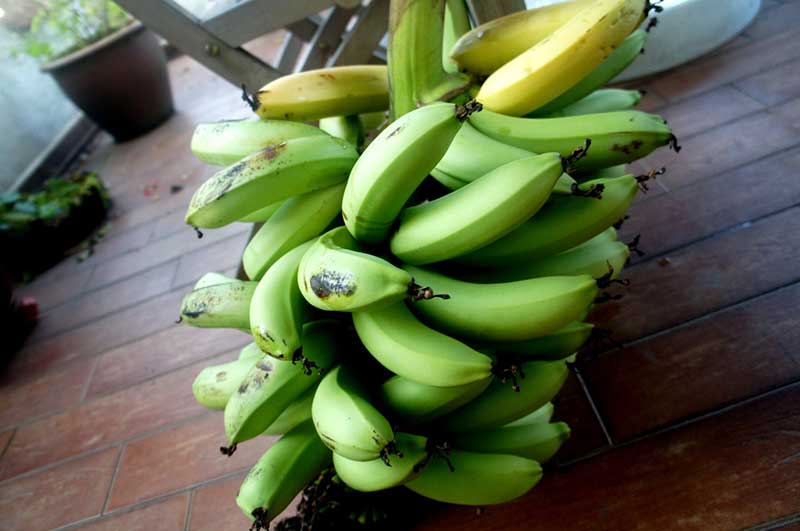
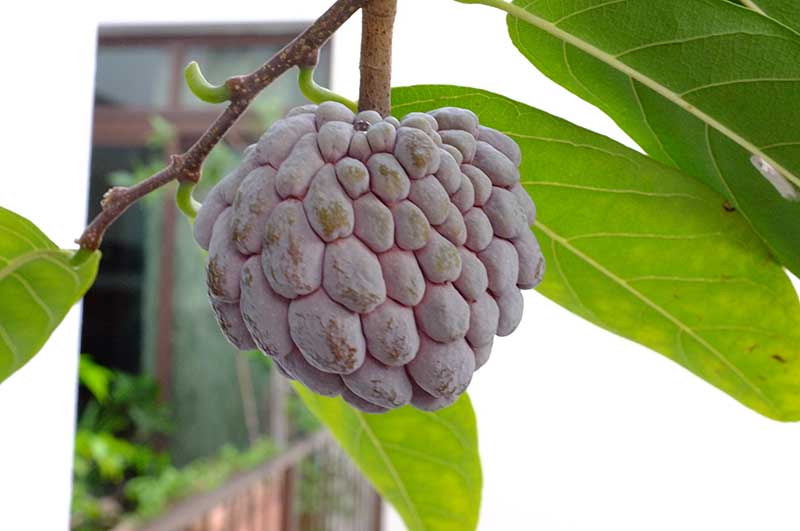
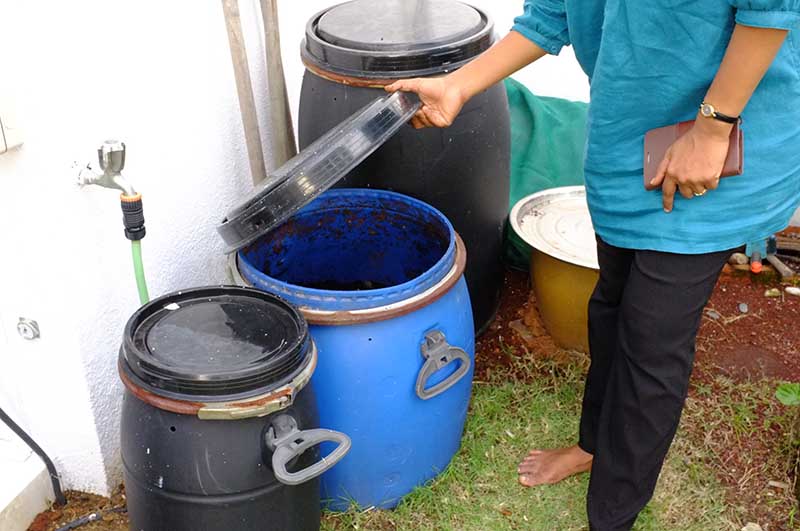
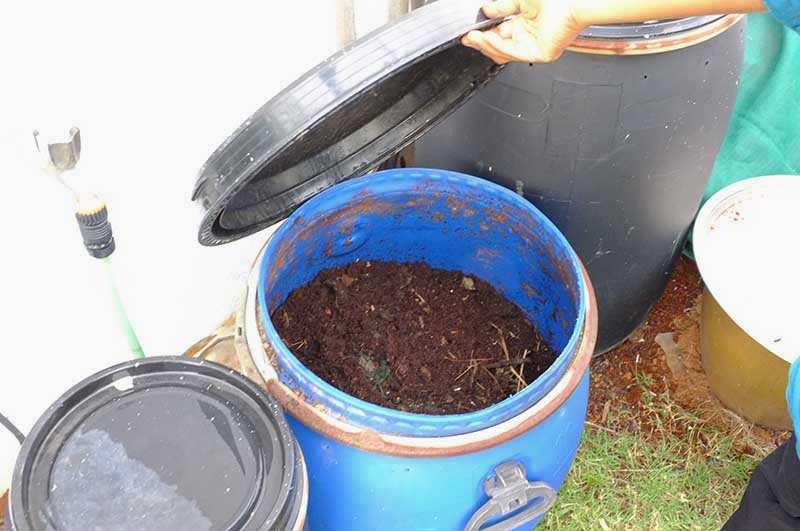
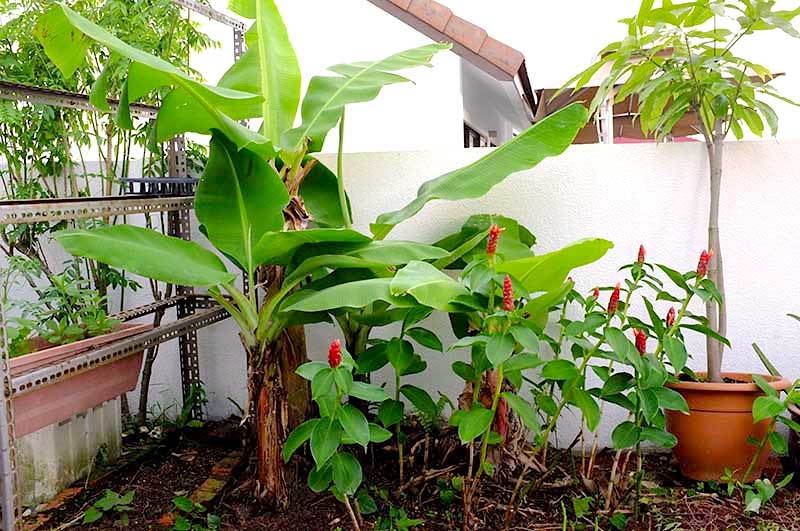
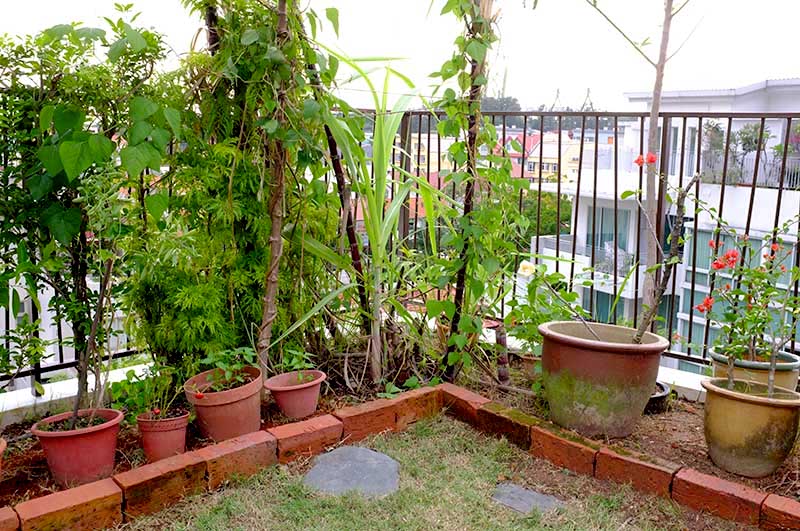

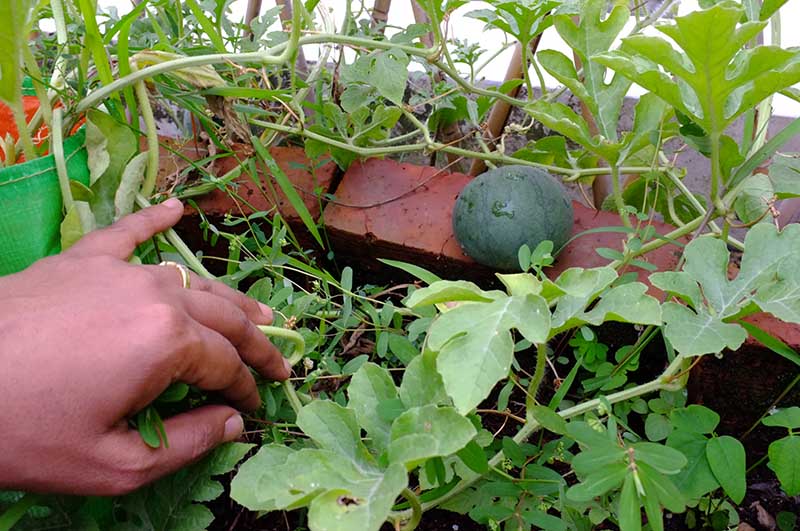
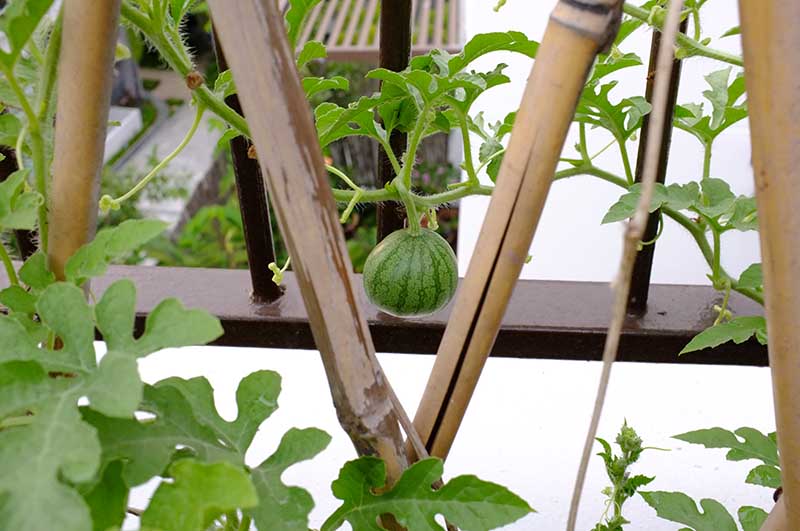
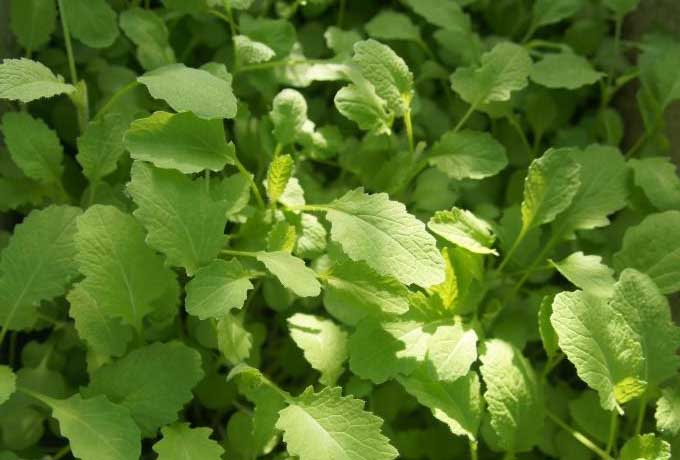
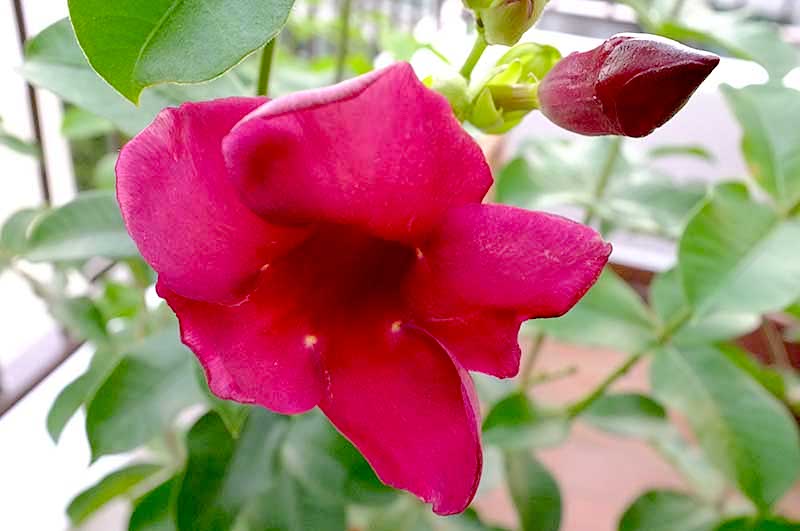
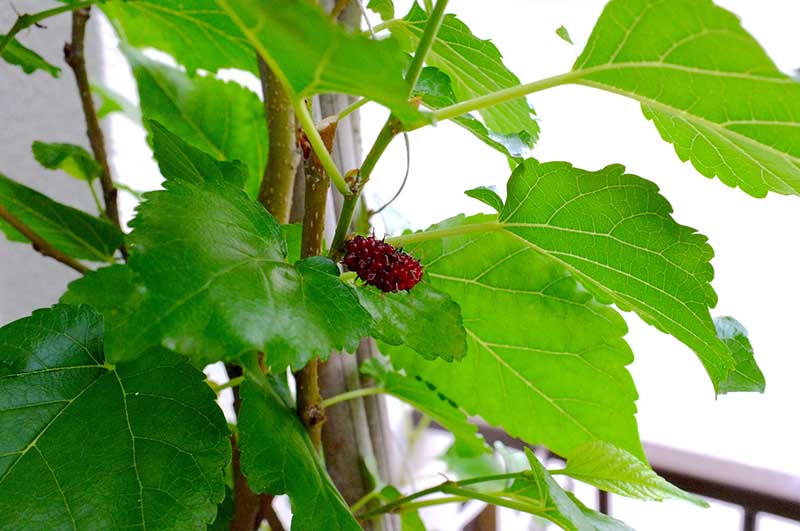
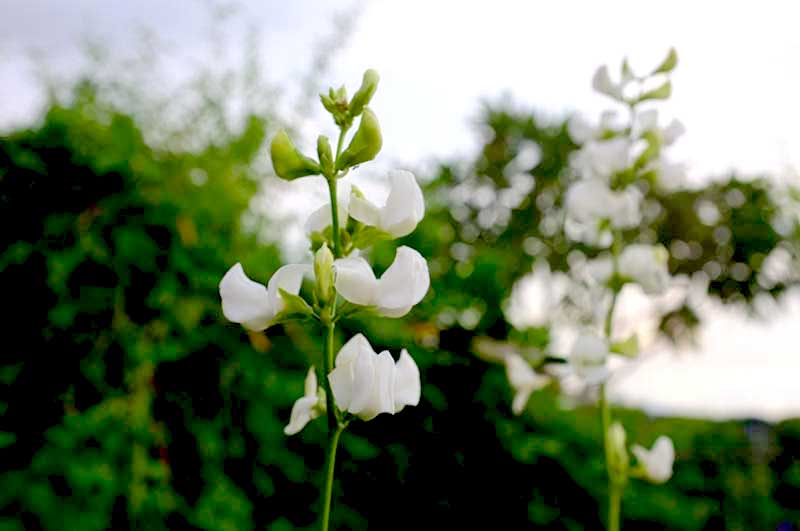
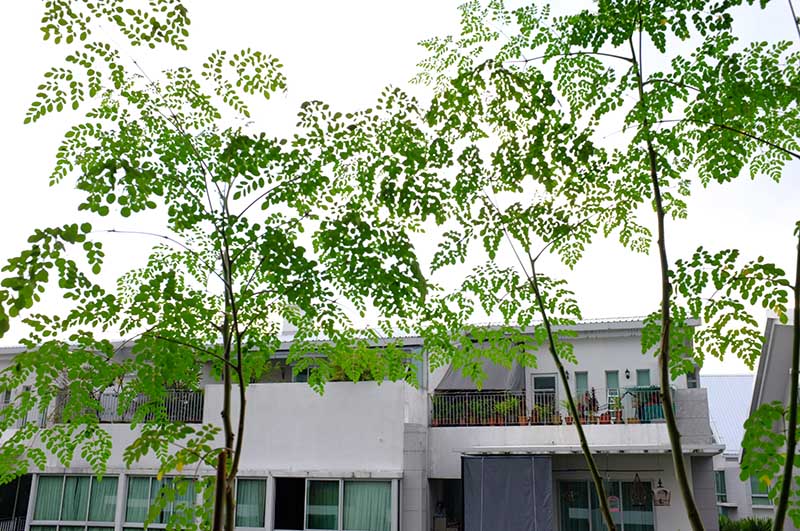
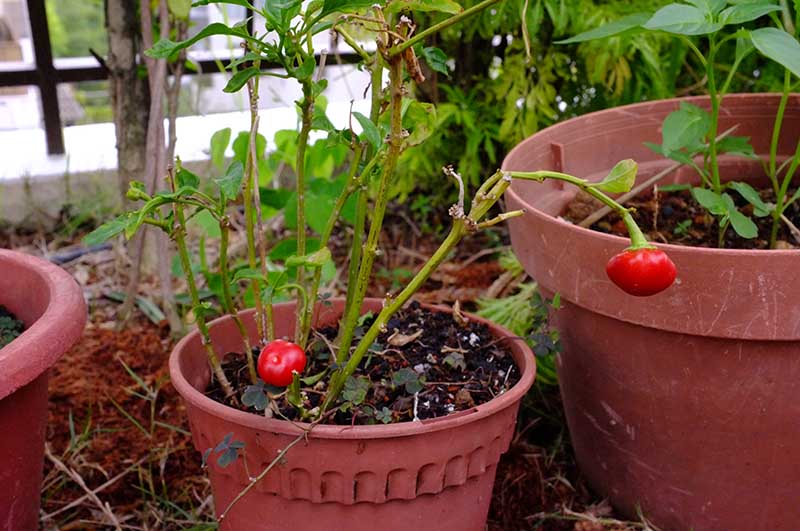
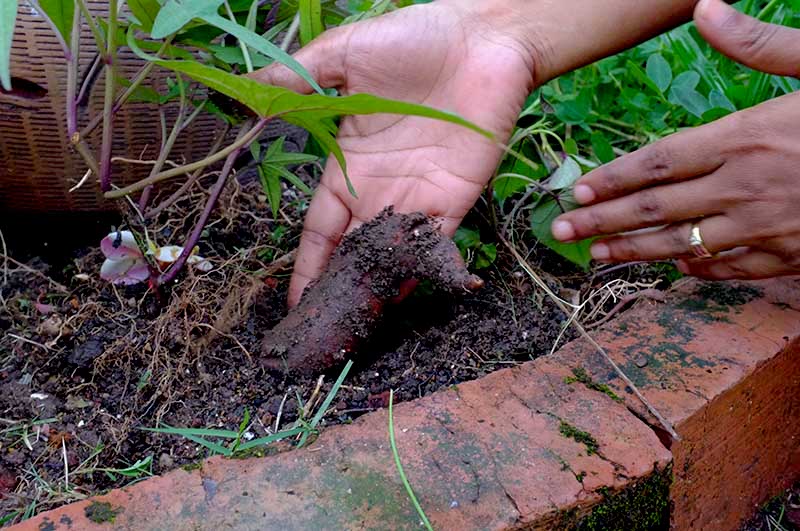
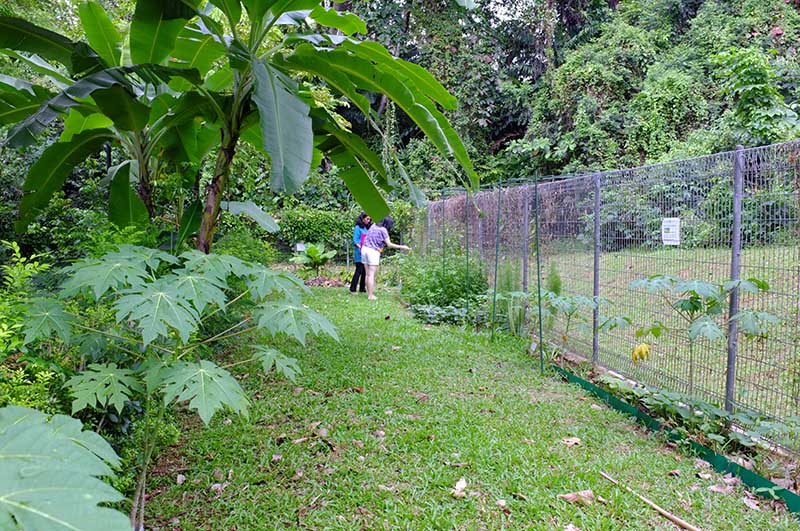
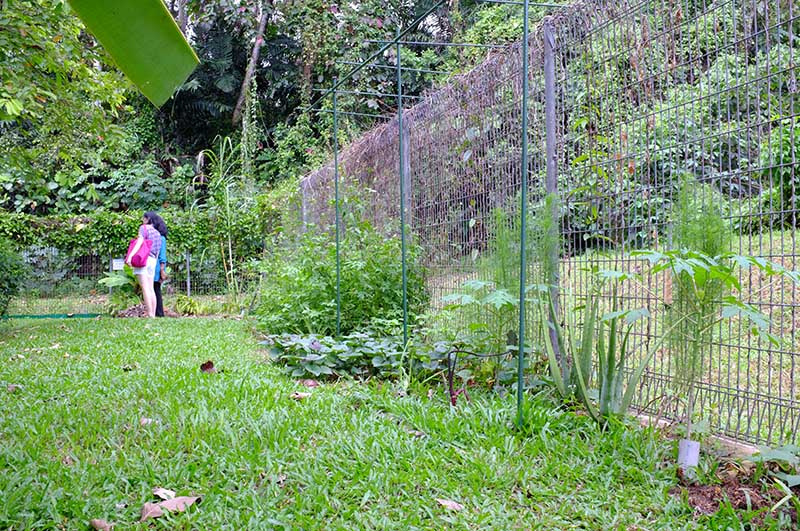
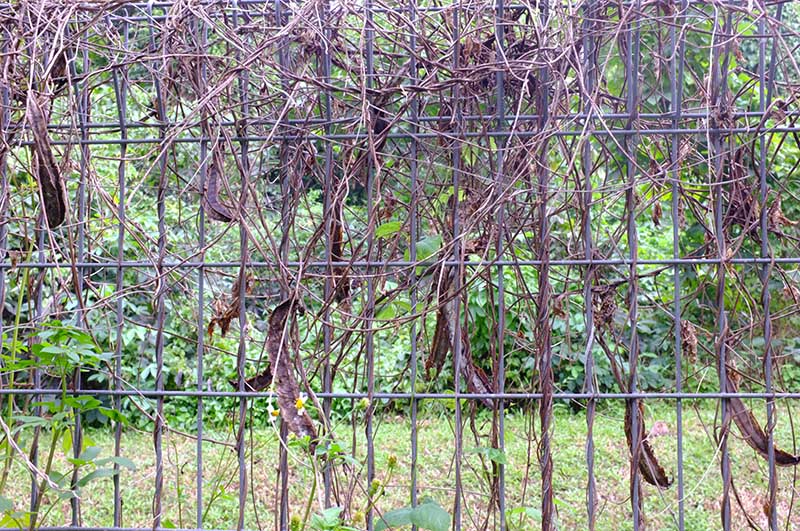


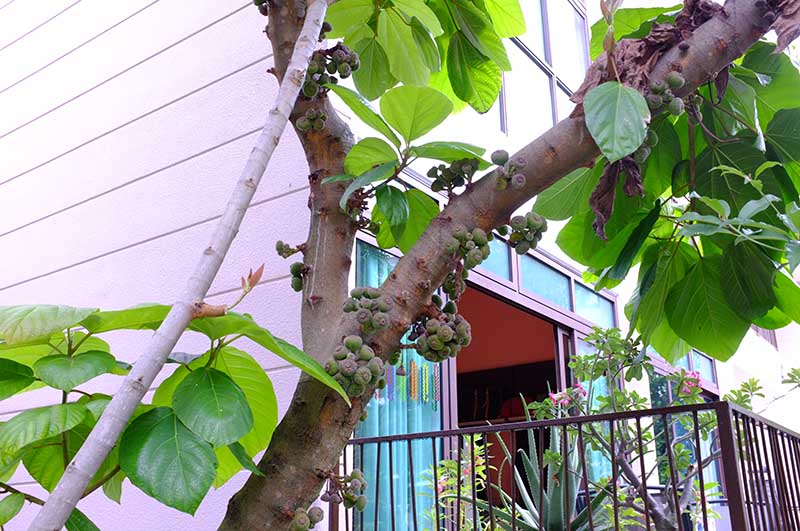
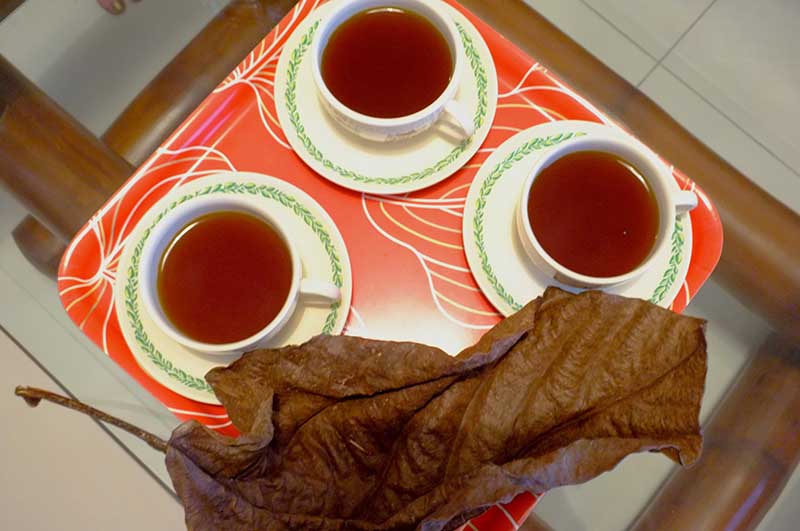
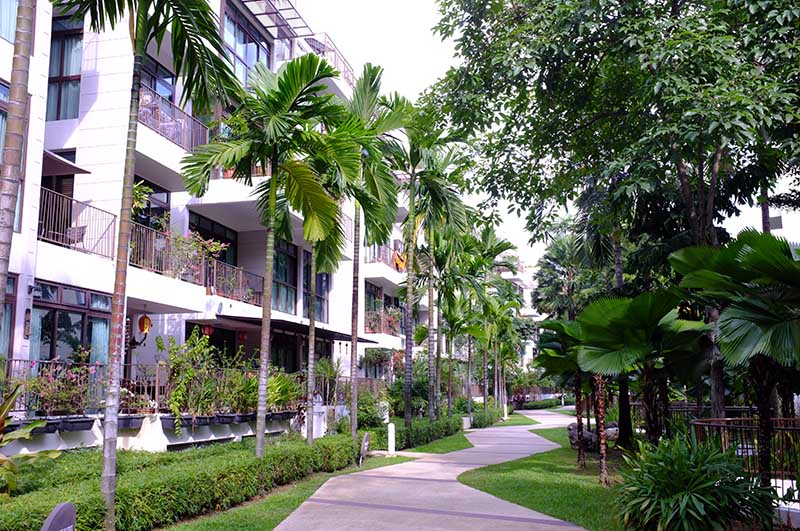
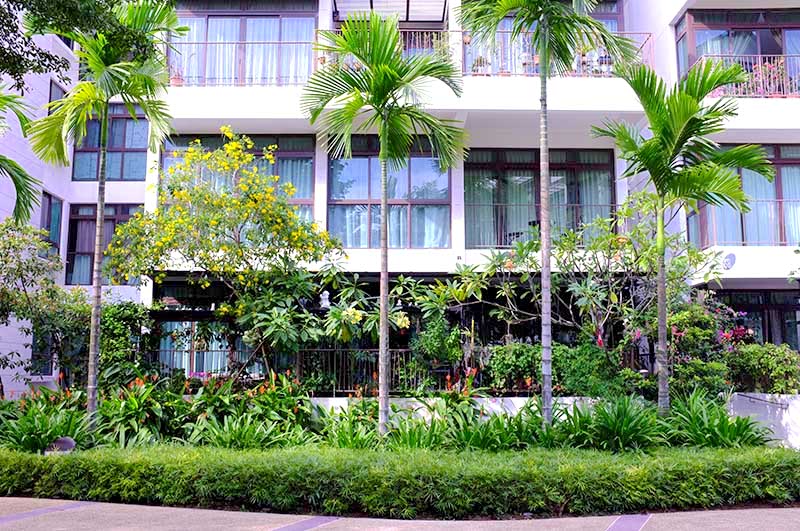
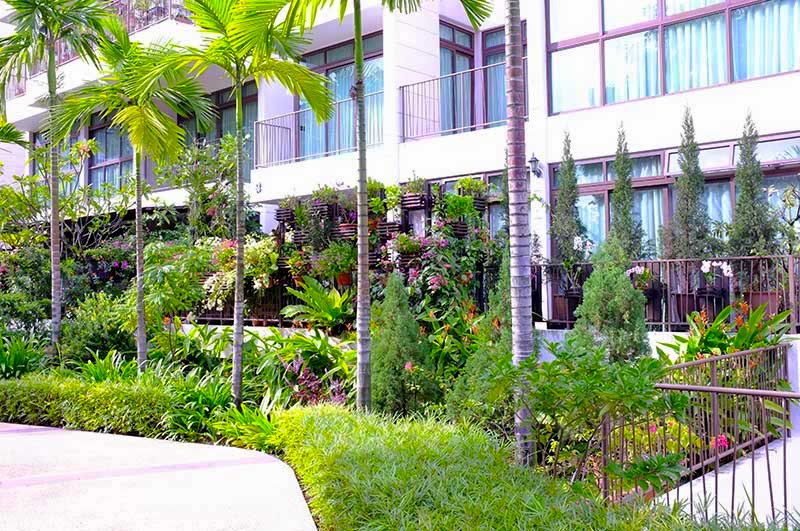
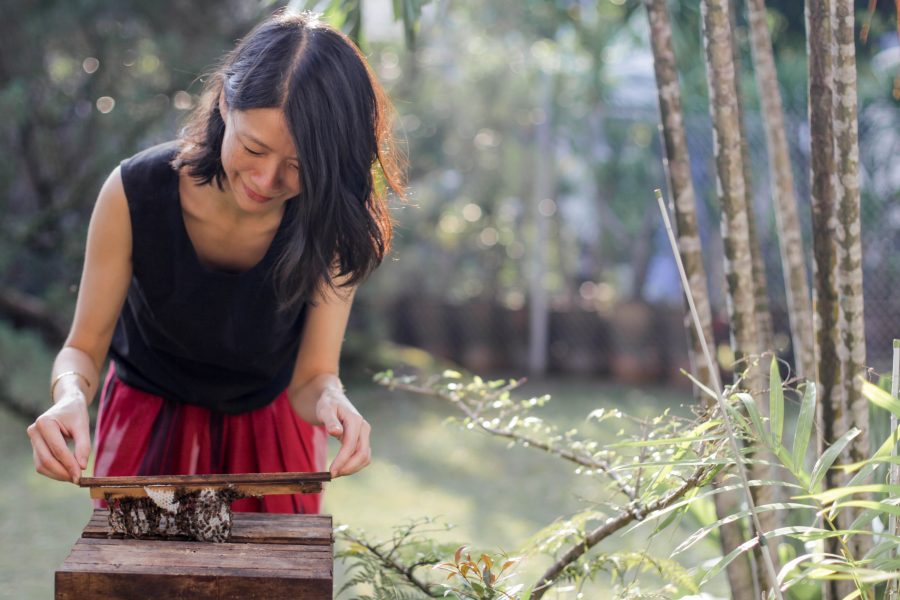
No Comments